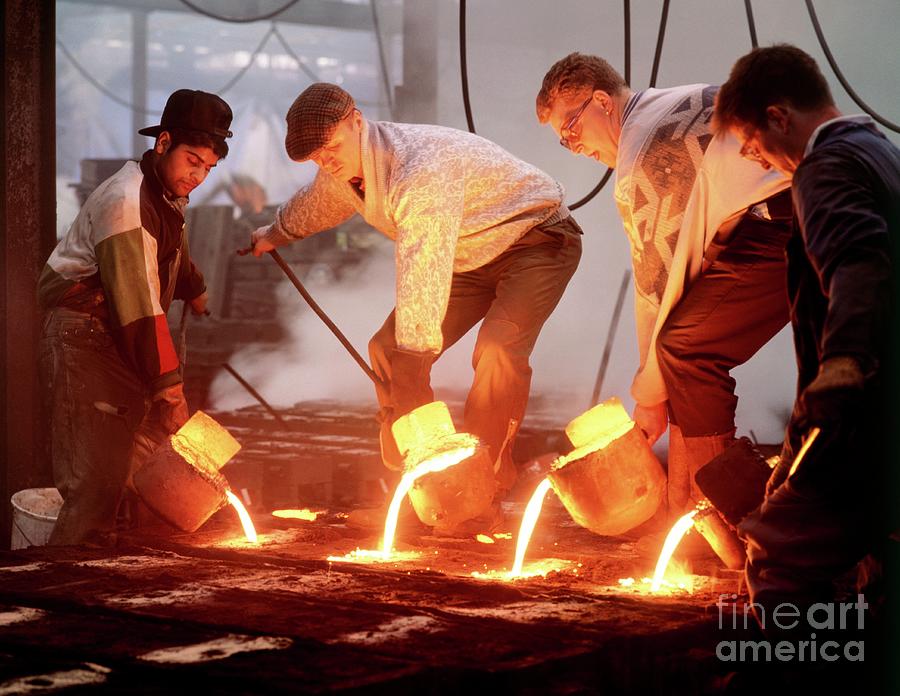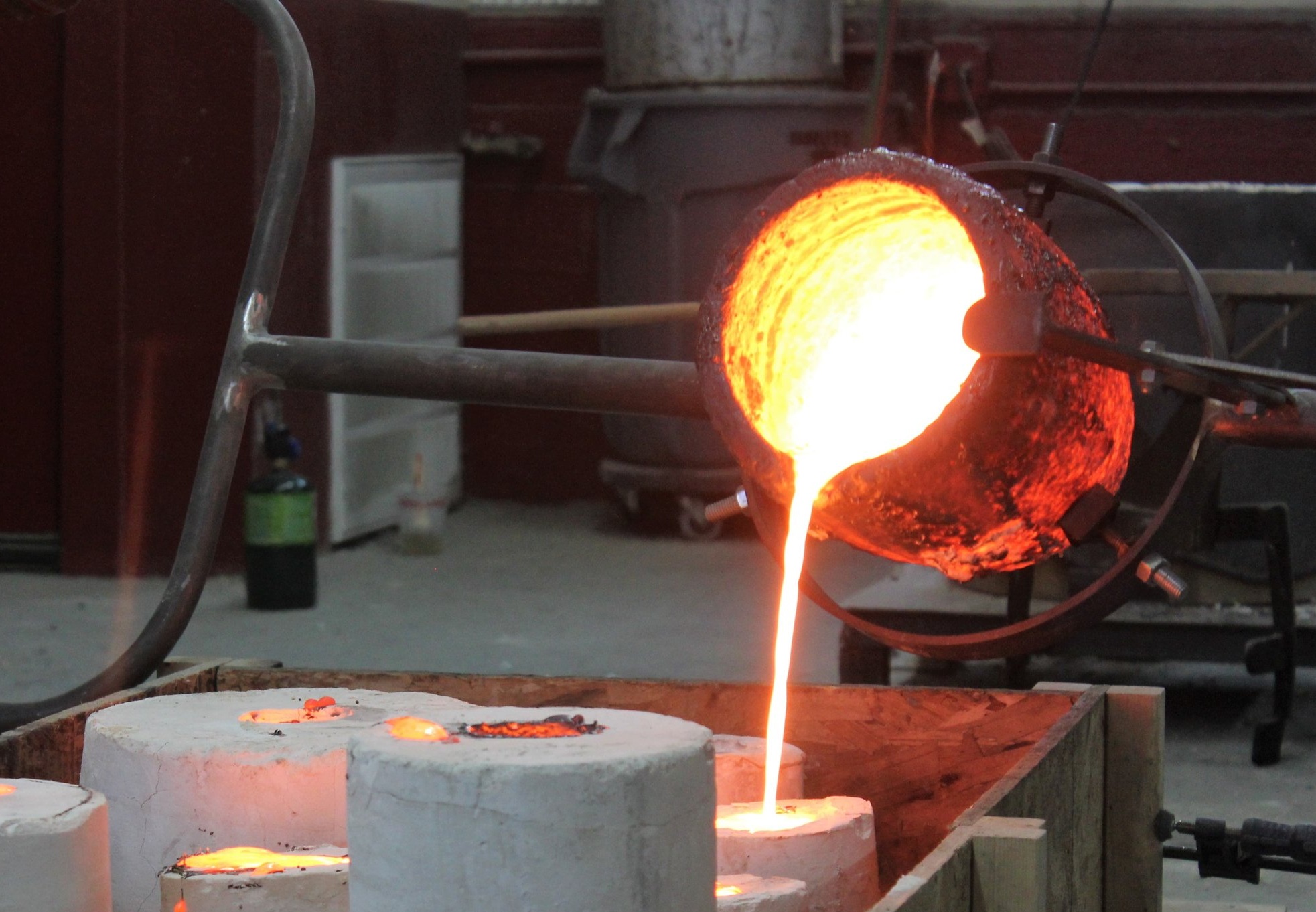The Intersection of Art and Engineering: How Metal Casting Unites Creativity with Industry
Wiki Article
Checking out the Art of Metal Casting: Methods and Applications in Modern Foundries
Metal casting is a classic craft that integrates creativity with design accuracy. From ancient methods to modern-day innovations, this procedure has progressed considerably. Different techniques, such as sand casting and lost-wax casting, display the flexibility of the tool. At the same time, developments like 3D printing are improving exactly how shops operate. As the lines in between capability and artistry blur, one should think about how these developments influence both typical practices and modern applications. What exists ahead in this developing landscape?The Fundamentals of Metal Casting
Metal casting, a critical procedure in production, includes pouring liquified steel into a mold and mildew to attain a preferred shape. This technique serves as a structure in the production of complicated steel elements across numerous sectors. Crucial element of metal casting include the choice of materials, which can vary from light weight aluminum to steel, each chosen for its certain homes and application suitability. The process starts with mold and mildew production, which can be made from sand, metal, or porcelains, depending on the casting approach made use of. The molten metal is then carefully put right into the mold and mildew, where it cools down and solidifies. Vital factors such as temperature control, cooling down rate, and mold layout significantly affect the end product's top quality and characteristics. On top of that, understanding the chemical and physical buildings of the steel aids in maximizing casting performance, eventually boosting the performance of the production procedure and making certain high-quality output tailored to details demands.Typical Casting Strategies
Standard casting methods incorporate a selection of techniques that have stood the examination of time, demonstrating their performance in generating intricate metal elements. One famous method is sand casting, which utilizes a mix of sand and a bonding agent to develop molds. The flexibility of sand casting permits the manufacturing of varied shapes, making it ideal for both small and massive manufacturing. One more noteworthy technique is financial investment casting, usually made use of for complex and precise geometries. This technique entails developing a wax pattern that is coated in a ceramic shell, which is then heated to get rid of the wax, leaving a dental caries for liquified steel. Additionally, die casting is made use of for high-volume manufacturing, where liquified steel is infused into reusable steel molds. Each of these typical methods continues to be appropriate, showcasing the craftsmanship and ability fundamental in the art of metal casting, while fulfilling the needs of numerous industries.Modern Innovations in Metal Casting
As markets evolve, advancements in steel casting are reshaping production procedures and enhancing effectiveness. Advanced modern technologies such as 3D printing and computer-aided design (CAD) are changing mold creation, permitting for intricate designs that were formerly unattainable. These techniques assist in fast prototyping, cultivating and decreasing lead times imagination in item growth.In addition, the integration of automation and robotics in foundries is enhancing procedures, decreasing human mistake, and increasing safety. Smart sensors and real-time tracking systems allow specific control of temperature level and material buildings, ensuring higher high quality results.
In addition, sustainable methods are arising, with using energy-efficient heating systems and recycled products, minimizing ecological influence. The adoption of composite materials and sophisticated alloys is likewise broadening the opportunities of metal casting, resulting in stronger and lighter elements. On the whole, these modern advancements are transforming metal casting into a much more effective, accurate, and environmentally liable sector.
Applications Across Various Industries

While diverse sectors increasingly depend on steel casting, the method's adaptability plays a crucial duty in meeting certain application demands. In the automotive market, steel casting is vital for generating engine components, transmission housings, and various other detailed parts that need next page accuracy and sturdiness. The aerospace sector go to these guys benefits from lightweight casted elements, making certain both performance and fuel performance. Additionally, the building market makes use of steel casting for architectural aspects, such as light beams and sustains, improving the integrity of structures and bridges.
Moreover, the energy field employs steel casting for generator blades and various other significant machinery that have to stand up to extreme conditions. Medical tools likewise see applications of steel casting, especially in medical instruments and prosthetics, where accuracy is vital - Metal Foundry. In general, the convenience and reliability of steel casting make it important across different areas, adding to the innovation of modern technology and framework in modern-day society
The Artistic Side of Metal Casting
Although frequently related to industrial applications, steel casting additionally discovers its location in the domain of art, where competent artisans change molten metal into expressive sculptures and intricate styles. This creative side of metal casting incorporates diverse strategies, including sand casting, lost-wax casting, and investment casting, each offering special possibilities for creative thinking. Musicians utilize these approaches to create works that vary from abstract forms to natural representations, permitting personal expression and discourse on contemporary concerns.
Regularly Asked Inquiries
What Security Steps Are Important in a Metal Casting Foundry?
Essential safety measures in a steel casting factory consist of personal protective devices, proper ventilation, emergency situation procedures, training in taking care of molten steels, helpful resources normal equipment upkeep, and clear communication of dangers to assure employee safety and wellness. Aluminum Foundry.Just How Do Environmental Laws Impact Metal Casting Processes?
Environmental laws substantially influence steel casting processes by mandating the usage of cleaner technologies, minimizing emissions, and advertising waste management methods. Compliance usually needs financial investments in devices, training, and alterations to existing procedures to minimize ecological impact.What Are the Typical Issues in Metal Castings?
Usual defects in steel castings consist of porosity, shrinking, inclusions, and misruns. These concerns can develop from improper mold and mildew style, inadequate temperature control, or contamination, eventually influencing the structural integrity and general top quality of the end product.How Is Waste Managed During Metal Casting Manufacturing?
Waste monitoring in steel casting production includes reusing scrap metal, executing effective material usage, and using sophisticated innovations to decrease waste. Shops take on techniques like sand reclamation and proper disposal techniques to minimize environmental effect.What Career Opportunities Exist in the Metal Casting Market?
The steel casting sector supplies diverse occupation possibilities, including functions such as shop manager, metallurgical designer, quality assurance assessor, pattern manufacturer, and manufacturing manager, dealing with numerous ability and experience in making processes.Metal casting, an essential process in manufacturing, entails putting liquified metal right into a mold and mildew to achieve a wanted shape. Furthermore, die casting is utilized for high-volume manufacturing, where liquified metal is infused right into recyclable metal mold and mildews. While varied markets progressively depend on metal casting, the strategy's flexibility plays an important role in conference details application demands. Usually associated with industrial applications, metal casting also discovers its location in the domain of art, where knowledgeable craftsmens transform liquified metal into complex styles and meaningful sculptures. Waste monitoring in metal casting production entails recycling scrap metal, implementing reliable product use, and using sophisticated modern technologies to lessen waste.
Report this wiki page